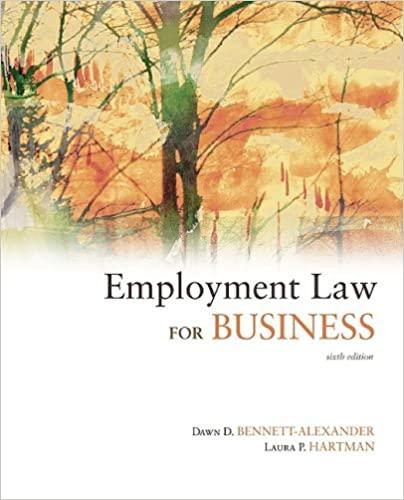Question
In 2004, after Louis, a plumber, met Karen, a trainee architect, they started a relationship. A year later they decided to live together. In 2005
In 2004, after Louis, a plumber, met Karen, a trainee architect, they started a relationship. A year later they decided to live together. In 2005 Louis purchased a house for them to live in. Karen was still training, so Louis paid the deposit and raised the balance of the purchase price from the Ubend Bank by way of a mortgage secured on the house. The house was conveyed into Louis's name and he became the sole registered owner. In 2006 Karen qualified. She immediately found a job in a firm of architects in London. The couple opened a joint bank account into which they each paid 1,500 from their monthly earnings. They used the joint bank account to meet all of their household and other living expenses, including the monthly mortgage payments to the Ubend Bank. In May 2007 Karen gave birth to Eliott. She immediately decided to give up her job as an architect in London so that she could stay at home to look after her family. Louis and Karen therefore closed the joint bank account. After that Louis paid the monthly mortgage payments and other household bills from his own bank account. In 2009 they had a second child, Fiona. By this time Louis was working long hours and winning plumbing contracts that took him overseas to work for weeks at a time. Karen was doing all the household tasks, and looking after Elliot and Fiona. She did all the decorating and minor repairs around the house. In 2012, Louis finished a lucrative plumbing contract in Saudi Arabia that allowed him to repay the outstanding balance of the mortgage loan. Later that year Karen inherited 15,000 when her father died. She used the money to build a loft extension that she designed herself. A week ago Louis told Karen that he has met somebody else with whom he wants to set up home abroad. Louis therefore wants the house to be sold. Advise Karen about what, if any, interest she may be able to claim in the house by way of trust law principles.
Step by Step Solution
There are 3 Steps involved in it
Step: 1

Get Instant Access to Expert-Tailored Solutions
See step-by-step solutions with expert insights and AI powered tools for academic success
Step: 2

Step: 3

Ace Your Homework with AI
Get the answers you need in no time with our AI-driven, step-by-step assistance
Get Started


